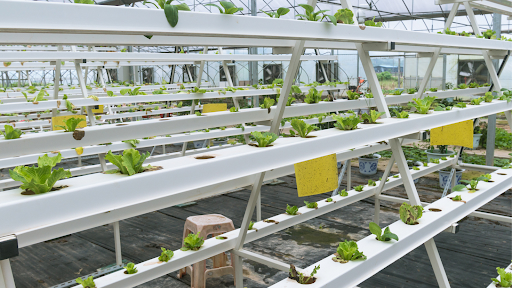 1-800-805-5783
1-800-805-5783 
Aeroponics farming for sustainable agriculture is an innovative, soil-less cultivation method that is transforming traditional agricultural practices. As an essential component of modern horticulture, aeroponic agriculture is gaining popularity due to its numerous advantages, such as enhanced crop yield, space efficiency, and sustainability. This article explores the science behind aeroponics farming, its benefits, and its future potential in agricultural development.
Aeroponics farming, the heart of advanced horticulture, is a process that grows plants in an air or mist environment without using soil or an aggregate medium. This high-tech cultivation method offers a controlled environment where plants can flourish, and nutrients can efficiently deliver directly to the roots. Aeroponic agriculture leverages technology to ensure optimal growth, providing plants with the perfect blend of water, nutrients, and oxygen.
Aeroponics farming is the epitome of sustainable agriculture for many reasons. Firstly, it utilizes less water compared to traditional farming methods. The system recycles water, significantly reducing waste and making aeroponic agriculture particularly valuable in areas where water is scarce.
Secondly, aeroponics farming has a higher yield potential thanks to improved nutrient delivery and growth conditions. The lack of soil eliminates many common gardening problems, such as pests, diseases, and weeds, making crop management more straightforward and efficient.
Lastly, aeroponic agriculture systems are scalable and versatile. They can be built vertically, making them ideal for urban farming where space is constrained. The system’s flexibility allows for year-round agriculture, independent of weather conditions, and can grow various crops, from leafy greens to root vegetables and herbs.

As the global population continues to increase, the demand for food is expected to rise. Aeroponics farming is one of the most promising solutions to this challenge, offering an environmentally friendly and sustainable way to maximize agricultural productivity.
Integrating technology such as artificial intelligence and IoT can further enhance the capabilities of aeroponic agriculture. Intelligent systems that monitor and adjust environmental conditions like humidity, temperature, and nutrient levels can automate farming and optimize growth conditions, paving the way for a new agricultural era.
The realm of aeroponics farming is much more than a contemporary trend; it’s a revolutionary approach that could shape the future of global food production. As more people realize aeroponic agriculture’s immense potential, it will likely become a standard in sustainable farming practices, ensuring food security while preserving our planet’s precious resources.